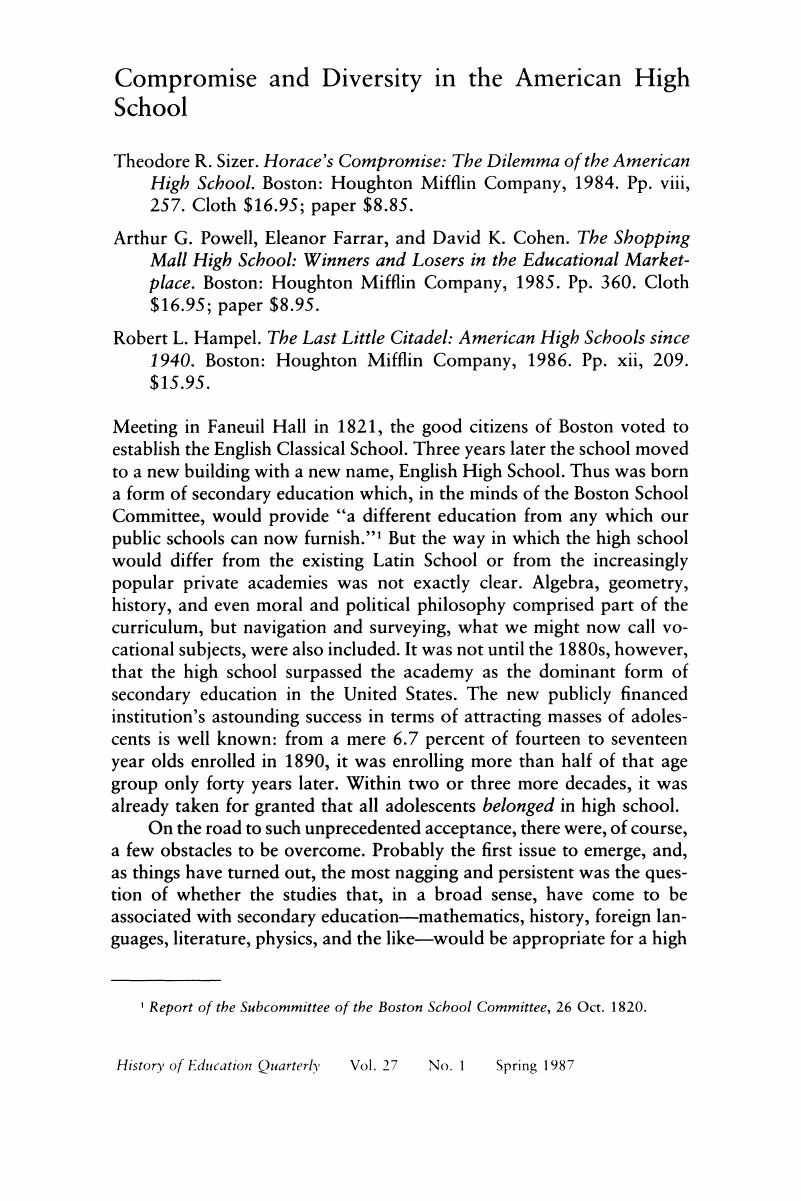No CrossRef data available.
Published online by Cambridge University Press: 24 February 2017

1. Report of the Subcommittee of the Boston School Committee, 26 Oct. 1820.Google Scholar
2. National Education Association, Report of the Committee on Secondary School Studies (Washington, D.C., 1893).Google Scholar
3. Stanley Hall, G., Adolescence: Its Psychology and Its Relations to Physiology, Anthropology, Sociology, Sex, Crime, Religion, and Education, Vol. 2 (New York, 1904), 510.Google Scholar
4. Eliot, Charles W., “The Fundamental Assumptions in the Report of the Committee of Ten,” Educational Review 30 (Nov. 1905): 325–43.Google Scholar
5. Massachusetts Commission on Industrial and Technical Education, Report of the Commission on Industrial and Technical Education (Boston, 1906); Thorndike, Edward L., “The Opportunity of the High Schools,” The Bookman 24 (Oct. 1906): 180.Google Scholar
6. Cusick, Philip A., The Egalitarian Ideal and the American High School: Studies of Three Schools (New York, 1983).Google Scholar
7. For an excellent account of the process by which school administrators were transformed from educators to managers, see Callahan, Raymond E., Education and the Cult of Efficiency: A Study of the Social Forces That Have Shaped the Administration of Public Schools (Chicago, 1962).Google Scholar
8. See, for example, McNeil, Linda M., “Negotiating Classroom Knowledge: Beyond Achievement and Socialization,” Journal of Curriculum Studies 13 (Oct.-Dec. 1981): 313–28.Google Scholar
9. Dewey, John, “The Situation as Regards the Course of Study,” Journal of Proceedings and Addresses of the Fortieth Annual Meeting of the National Education Association (1901), 337–38.CrossRefGoogle Scholar
10. Educational Policies Commission, Education for All American Youth (Washington, D.C., 1944).Google Scholar
11. Regrettably, the 1952 Dewey quotation that Hampel chose to illustrate the persistence of authoritarianism in education (p. 51) was written by someone else, even though it appeared under Dewey's name. “Deletions from the Dewey Bibliography,” The Dewey Newsletter 9 (Oct. 1975).Google Scholar
12. Conant, James B., The American High School Today: A First Report to Interested Citizens (New York, 1959).Google Scholar